Ask Ethan: Is This Actually A Hole In The Universe?
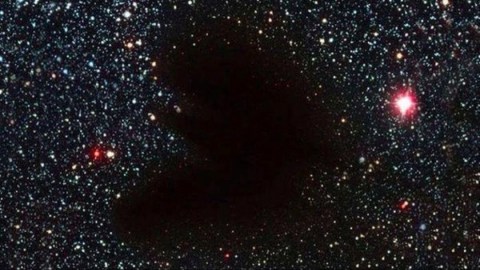
Don’t believe everything you read on the internet, even if “science” is in the title.
“Youth always tries to fill the void, an old man learns to live with it.”
–Mark Z. Danielewski
There’s a lot of brilliant, scientifically accurate information out there on the internet, to be sure. But arguably, there are a lot more sites devoted to generating clicks and traffic irrespective of what’s scientifically true, and it’s often very hard for a non-specialist to tell them apart. For this week’s Ask Ethan, I chose a question from William Peters, who wanted to ask about the image (discovered here by him) shown atop:
Any idea what this is. Have you previously written about it?
First off, here’s what “this” actually is.
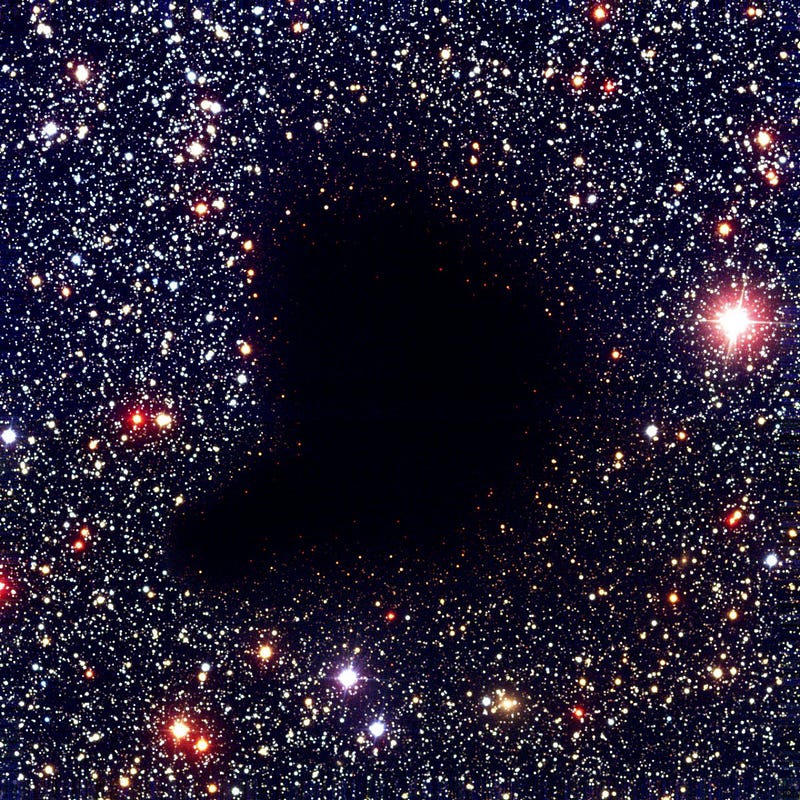
The star field in the background is so rich because these are stars within our own Milky Way. That’s right, the Milky Way, our home galaxy that’s only 100,000 light years across. The dark cloud that’s blocking the background starlight, therefore, must be closer than those stars are, and so there’s no way it can be billions of light years distant. In fact, it’s much closer than that: this object is a cloud of gas and dust that’s just 500 light years away, known as Barnard 68. In the early 20th century, the astronomer E.E. Barnard made a catalogue of hundreds of “dark nebulae,” which are now known to be molecular clouds (or Bok globules) of neutral gas that are littered throughout our galaxy.
This one, in particular, is relatively small and close by:
- it’s just 500 light years away,
- it extends for about a quarter of a light year in radius,
- and contains about twice the mass of the Sun in total.
Because neutral gas blocks visible light but is transparent to longer wavelengths, you might wonder if we could actually see the background stars by looking in the infrared or in radio waves.
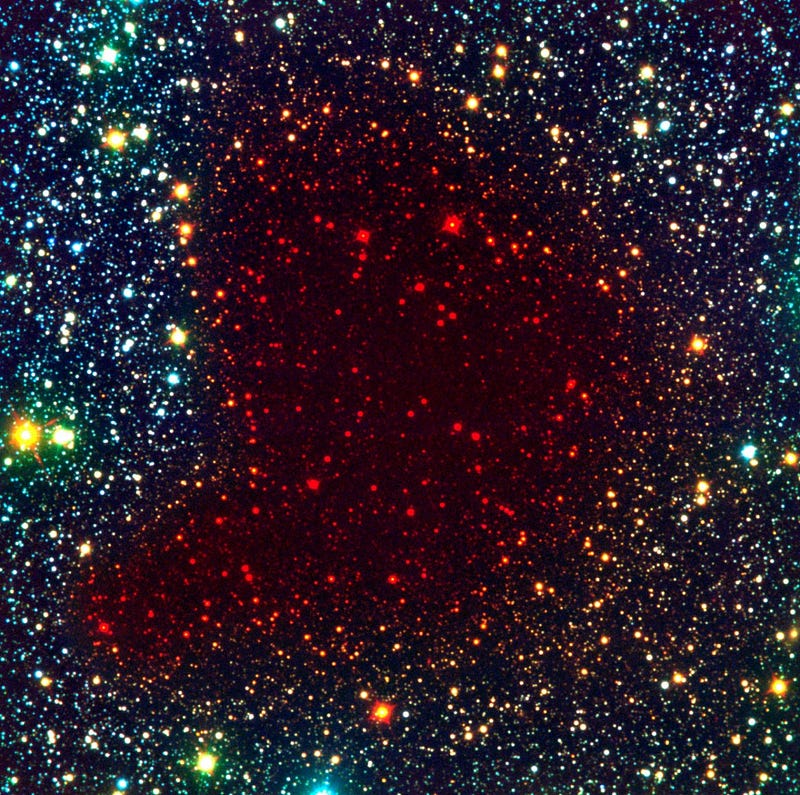
A combination of various facilities and instruments under the purview of the European Southern Observatory did exactly that, and discovered approximately 3,700 background stars behind this gas cloud. Moreover, the absorption properties of the neutral gas taught us a number of important things, including that the interior of the cloud is extremely cold, at just 16 K (or −257 °C/−431 °F), and that the outer layers of the globule are showing signs of an interior disruption. Further analysis showed that the inner core will collapse to form a star on timescales of approximately 200,000 years, meaning that we know exactly where to look to find the next, closest star that will form in complete isolation from all the others.
So no, William, the object shown in this photo is most definitely not a hole in the Universe. But there actually was a scientific study — a discovery, if you will — that came out in 2007, touting the existence of a hole in the Universe.
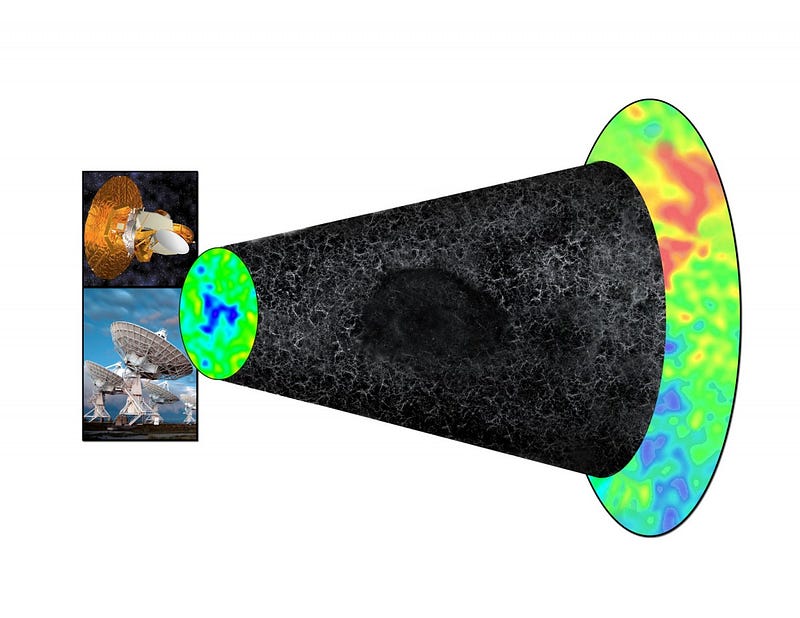
Imagine if there actually were a hole in the Universe, as the image claimed. If there were, as the original source claimed, “a void in space 1 billion light years across,” that was completely devoid of both all normal matter and dark matter. How would that show up? What you’d see, as illustrated above, would be a cold spot in the Cosmic Microwave Background (as seen by WMAP or Planck), as the changing gravitational field of such a void (or the late-time integrated Sachs-Wolfe Effect, in technical terms) causes the temperature of this cosmic radiation to dip slightly. But that cold spot would also have to be correlated with a region devoid of galaxies, something that would take a deep, wide-field survey.
What was actually found by the team of Rudnick, Shea and Williams who studied this region of the sky was a region of space that exhibited a reducedgalaxy count on the order of 20–45%, which could be interpreted in a number of ways.
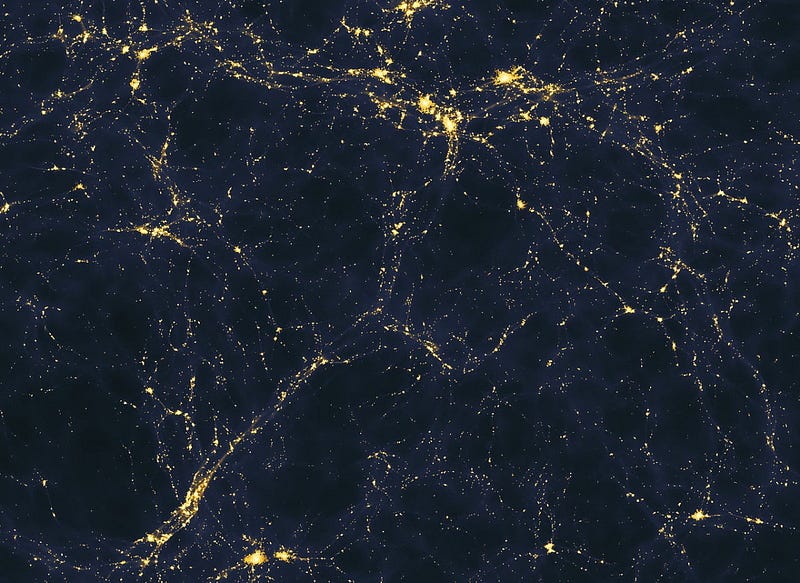
For sure, there are regions of space with far less matter — stars, gas, dust, and even dark matter — than average. In fact, there are other voids that are of comparable magnitude that have been discovered since. One could cause this effect by a large region that was completely empty of galaxies, which is the “hole in the Universe” option that many reporters (and, ahem, press releases) flock to. But it could also be caused by something far less spectacular: a minor underdensity over a larger volume/longer slice of the Universe. Until we do a dedicated, 3D cosmic map (using spectroscopy to verify the redshift of the observed galaxies) over the region of interest, we won’t know for certain how these galaxies are distributed. But as far as what you’ve heard, there may not be an interesting void there at all, much less a region with no matter of any type.
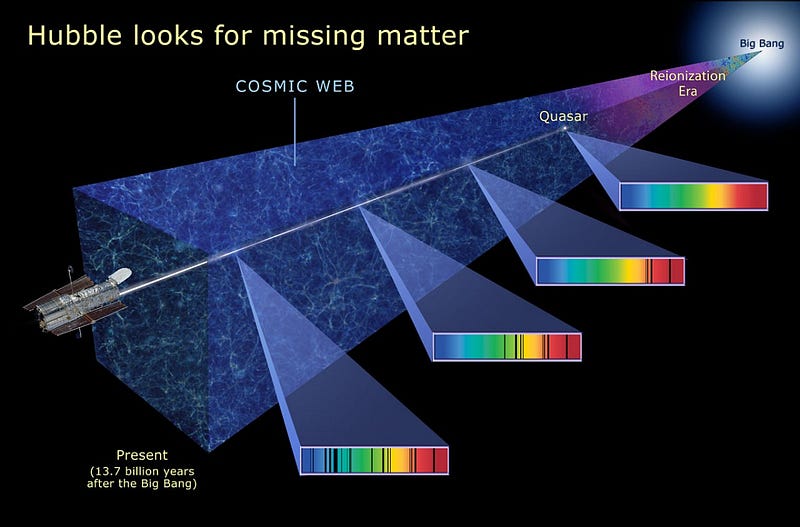
This brings up a big problem in science communication, as the image, atop, has been seen by millions of people (thanks, originally, to a certain facebook page), while the correct explanation and nuance of what’s actually happening will be seen by thousands or tens of thousands, at most. What do you do about people and entities who actively harm the amount of knowledge that the general populace has in the world? After all, the opposite of knowledge isn’t ignorance, but rather misinformation posing as knowledge.
If you’re going to talk to the world about science, your first responsibility is to accurately portray what we currently know about the Universe. And if youdon’t know what it is that we know, it’s your responsibility to find that information out. I’m happy to do my part to set the record straight — and you’re doing your part by sending in your questions to me for Ask Ethan — but it’s up to the science communicators and writers to be scrupulous and diligent, and it’s up to readers like you to choose your information sources wisely. Otherwise, there’s no way to tell the difference between what’s scientifically true and simply looking for the result you want to hear and calling it “science,” regardless of whether it is or not.
Submit your questions and suggestions for the next Ask Ethan here!
This post first appeared at Forbes. Leave your comments on our forum, check out our first book: Beyond The Galaxy, and support our Patreon campaign!





